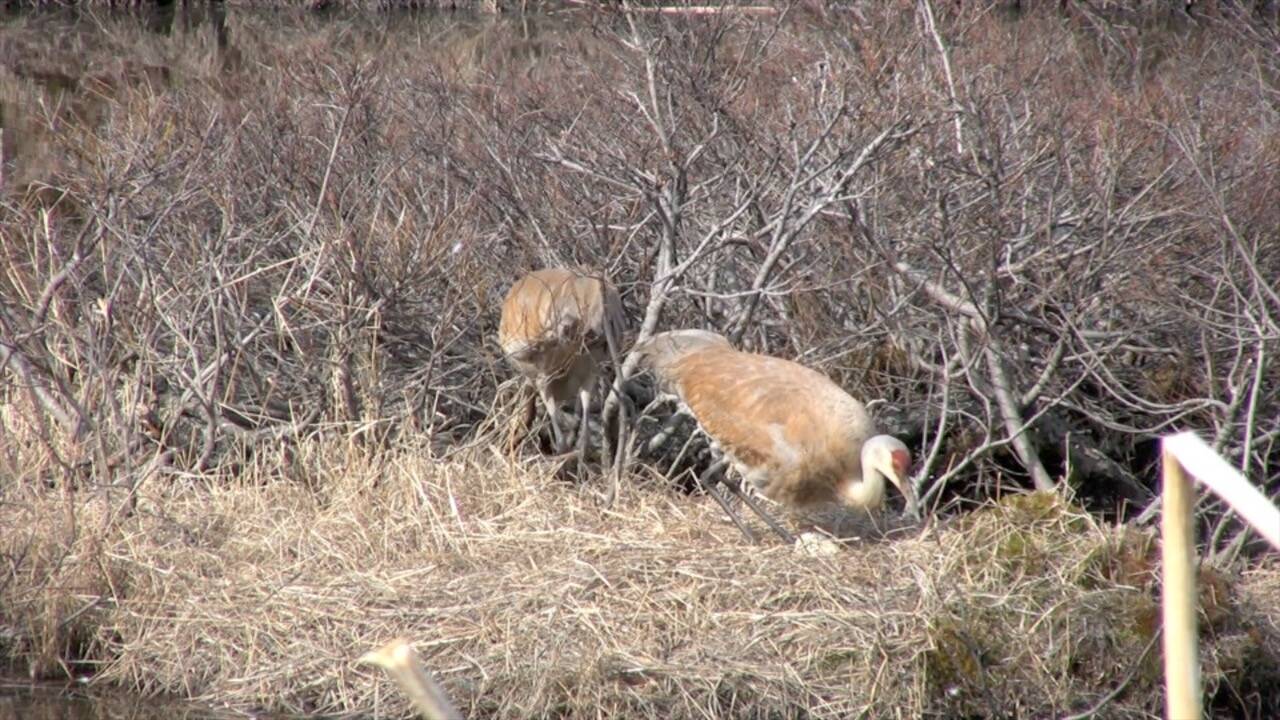Sandhill cranes nest in many places around Homer near people’s homes and neighborhoods. Most eggs hatch the first three weeks of June, so new tiny, golden colts are hatching daily now. Spring is a vulnerable time for all wildlife in Homer.
Like mama moose, sandhill cranes are very defensive and protective of their young. With bald eagles swooping down hoping to snatch up a tiny colt, loose dogs and cats, and other wild predators, the last thing a crane family nesting in our neighborhood needs is a child wanting to play with the cranes and their colts.
Kachemak Crane Watch received the following very concerning report of harassment of an in-town crane family:
As we descended a local trail, we noticed someone very close to the crane nest. As we got closer, we noticed a child jumping up and down and waving her arms towards two adult cranes. She was about 5 feet from the nest, looked 6-10 years old and about as tall as the cranes. The cranes were making noises and walking away from the nest, very agitated by her. After a couple minutes she left and ran to a light-colored van. When she ran away, the colt appeared out of the grassy area and the adults seemed less agitated. Then the girl came running bringing a bundle of grass, stopping within reaching distance of the cranes. She put the bundle of grass in front of her face and acted like she was hiding and then played peek-a-boo with the cranes. The cranes kept retreating, but she kept following them. At this point, the colt was completely hidden in the grass. After about three minutes of harassment, she finally noticed us telling her to stop. She ran back to the vehicle across the street where a woman got out. They both looked at us in the distance and then drove down the street.
We returned at 6:48 p.m., and the cranes were about 30 feet away from the nest. Before any disturbances today, one of the adult cranes was sitting on the nest and the other adult was close by. When we came back about two hours later, both cranes were away from the nest.
Sandhill cranes are protected by the Migratory Bird Treaty Act. This disturbance may have resulted in the death of a second colt not yet out of the nest. But even more disturbing is that the girl was allowed to approach so close to this crane family. A more aggressive male crane might have instantly charged at her before the adult person in the van could have reacted. His 4-inch beak could have stabbed her, causing a very serious injury, or even death. She is one very lucky child to have walked away unharmed.
We can live safely among wild creatures, and we are the richer for these experiences. However, it is important to know how to behave safely around our wild neighbors. Sandhill cranes delight the people who have them nesting or hanging out nearby, but they respect the cranes, know how to read the signs that the cranes are agitated, and stay a safe distance. They also keep their dogs and cats under control. Children need to be taught that cranes are not playthings and not to throw rocks at them. Please be considerate of our wild neighbors and help them have a successful nesting season.
For more information, visit the Kachemak Crane Watch website at www.cranewatch.org.
Nina Faust, a retired high school teacher, has been writing articles and making videos about cranes for over 20 years. As cofounder of Kachemak Crane Watch with her late husband, Edgar Bailey, she hopes that public education about cranes will help people understand crane behavior and the need to respect nesting habitat for sandhill cranes and all birds.



